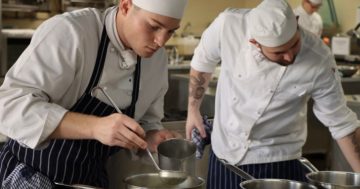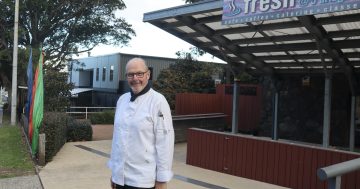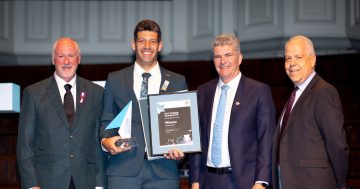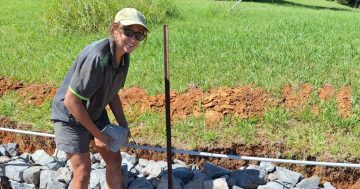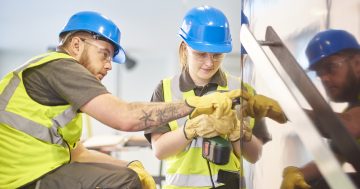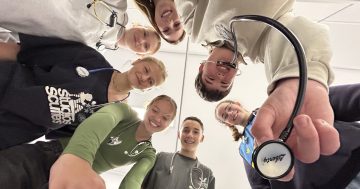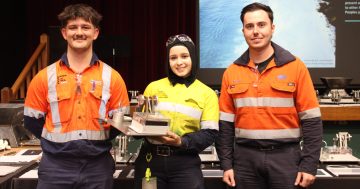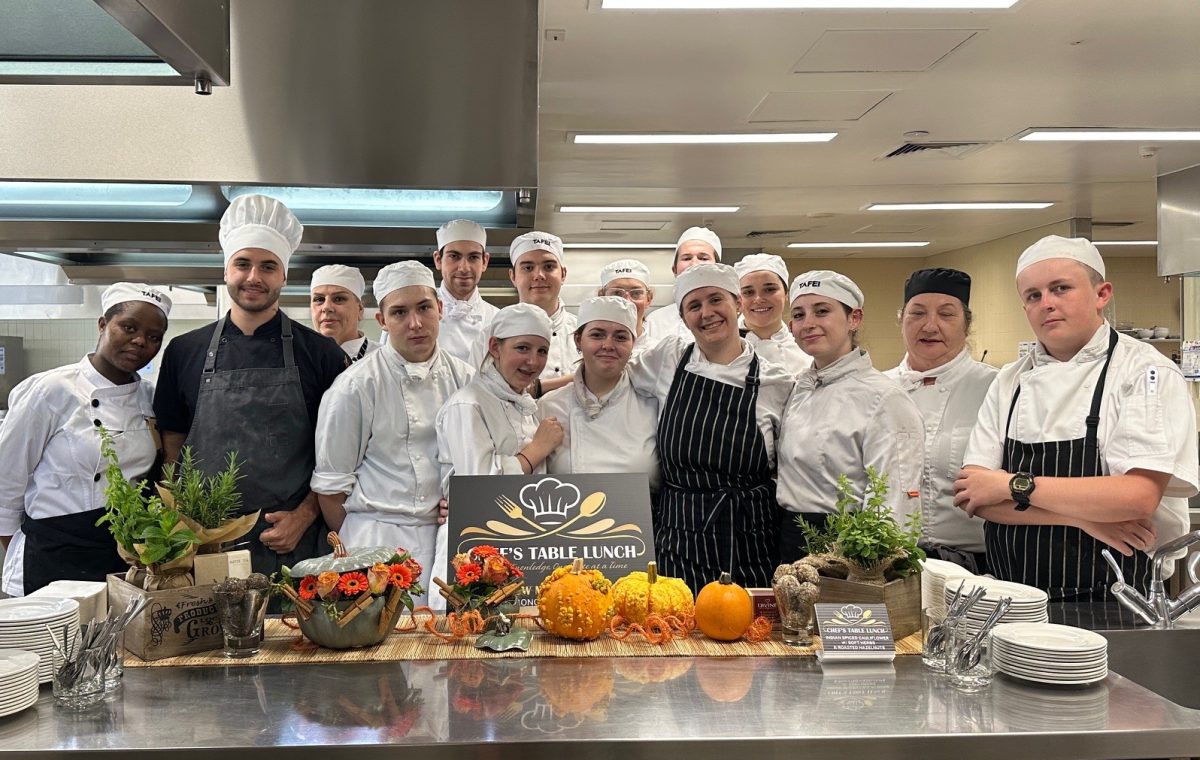
Fifteen TAFE NSW Wollongong cookery students prepared a luncheon showcasing their skills to employers and industry. Photos: TAFE NSW Wollongong Commercial Cookery.
Has the tide finally begun to turn for the Illawarra’s hospitality and tourism workforce?
After years of staff shortages, unfilled rosters and pressure on venues to do more with less, new figures suggest a glimmer of optimism: employment in the accommodation and food services industry across the Illawarra South Coast jumped 35.6 per cent in the year to August 2025, reaching around 21,800 workers.
For an industry accustomed to uncertainty, the scale of that surge is more than just a number — it’s a signal of possible recovery.
That sense of momentum was on full display this week at TAFE NSW Wollongong, which hosted its inaugural Chef’s Table and Campus Tour last week.
The event brought together local hospitality operators, industry partners and educators. Framed as both a celebration and a reset, the event offered employers a chance to reconnect with the TAFE, meet emerging culinary talent and witness the training infrastructure designed to supply the region with the skilled staff it desperately needs.
Guests were treated to a student-prepared luncheon showcasing the work of 15 commercial cookery students and apprentices, followed by a guided tour of TAFE’s state-of-the-art facilities.
For many in attendance, it was a reminder that tapping into a trained pipeline doesn’t just fill jobs — it lifts standards.
TAFE NSW commercial cookery teacher Peter Washbourne said the region’s booming food scene was driving the need for exactly that level of skill and confidence.
“If you look at the food landscape in the Illawarra, Shoalhaven and even as far south as the Southern Highlands, lots of new eateries are opening,” he said.
“Across Wollongong itself, it seems there’s a new restaurant opening nearly every week. To produce consistently good food, they need confident, skilled and knowledgeable staff.”
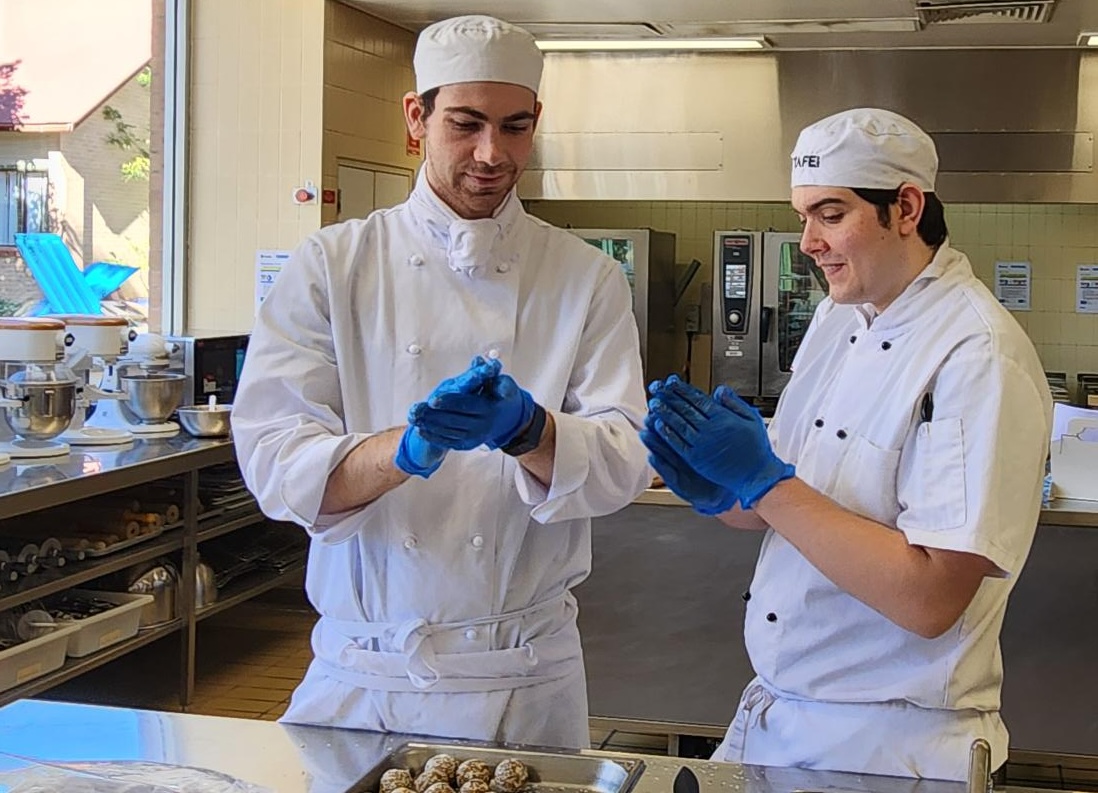
Ethan Vidler and Daniel Rouen were among the students.
Mr Washbourne believes the industry is stabilising partly because employers are once again able to access qualified chefs — many trained through TAFE — who can mentor younger cooks and build sustainable kitchen teams.
“If you look at Seek and other employment sites, I’d suggest the number of job ads is going down, and in no small part that comes down to employers having access to qualified chefs through institutions like TAFE NSW,” he said.
Currently, 128 students are moving through TAFE’s commercial cookery and baking programs.
For Mr Washbourne, it’s not just the numbers that inspire confidence but the passion he sees daily.
“It’s no secret hospitality often means long hours and hard work, and it’s a special breed of person who’s attracted to that path,” he said.
“What keeps us coming back is that passion and camaraderie. Hospitality teams form a special kind of bond — that’s why it’s not uncommon to see a bunch of kitchen staff sitting in the loading dock on milk crates after a shift, sharing a bowl of chips.”
The Chef’s Table, he said, was a “huge success” precisely because it recentred that spirit while giving employers a firsthand look at their future workforce.
Students preparing to complete their Certificate III have trained across 24 modules — from meat and poultry to cultural sensitivity, sustainability to pastry — and are now poised to enter kitchens across the region.
With Wollongong’s events calendar expanding, from festivals to major draws such as the World Triathlon Championship, the demand for talent isn’t slowing.
“For the first time in years, the region might just be better placed to meet it,” he said.









